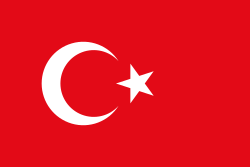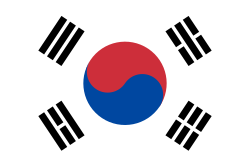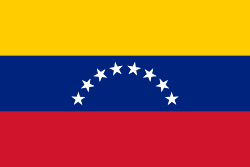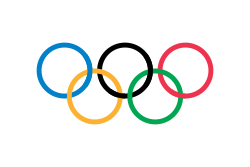Olympische Sommerspiele 2020/Karate – Kata (Männer)
| Sportart | Karate | ||||||||
| Disziplin | Kata | ||||||||
| Geschlecht | Männer | ||||||||
| Teilnehmer | 11 Athleten aus 11 Ländern | ||||||||
| Wettkampfort | Nippon Budōkan | ||||||||
| Wettkampfphase | 6. August 2021 | ||||||||
| |||||||||
| |||||||||
| Karatewettbewerbe bei den Olympischen Spielen 2020 | |
| Qualifikation | |
| Männer | Frauen |
| bis 67 kg | bis 55 kg |
| bis 75 kg | bis 61 kg |
| über 75 kg | über 61 kg |
| Männer | Frauen |
Bei den Olympischen Sommerspielen 2020 in Tokio war Karate erstmals Teil des olympischen Programms. Die Kata der Männer fand am 6. August 2021 im Nippon Budōkan statt.
Ergebnisse
Gruppenphase
| Gruppe A | ||||||
| Platz | Athlet | Runde 1 | Runde 2 | Durchschnitt | Runde 3 | Bemerkung |
|---|---|---|---|---|---|---|
| 1. | 27,34 | 27,40 | 27,37 | 27,28 | Finale | |
| 2. | 26,40 | 25,98 | 26,19 | 26,46 | Kampf um Bronze | |
| 3. | 25,72 | 25,52 | 25,62 | 25,98 | Kampf um Bronze | |
| 4. | 25,02 | 24,10 | 24,56 | ausgeschieden | ||
| 5. | 24,32 | 24,24 | 24,28 | ausgeschieden | ||
| Gruppe B | ||||||
| Platz | Athlet | Runde 1 | Runde 2 | Durchschnitt | Runde 3 | Bemerkung |
|---|---|---|---|---|---|---|
| 1. | 28,26 | 28,40 | 28,33 | 28,72 | Finale | |
| 2. | 27,00 | 27,28 | 27,14 | 27,32 | Kampf um Bronze | |
| 3. | 25,74 | 26,40 | 26,07 | 26,28 | Kampf um Bronze | |
| 4. | 25,08 | 25,92 | 25,50 | ausgeschieden | ||
| 5. | 25,00 | 24,94 | 24,97 | ausgeschieden | ||
| 6. | 23,20 | 23,40 | 23,30 | ausgeschieden | ||
Medaillenkämpfe
| Kampf um Bronze | ||
| | 26,72 | |
| | 26,34 | |
| Kampf um Bronze | ||
| | 26,14 | |
| | 27,26 | |
| Finale | ||
| | 27,66 | |
| | 28,72 | |
Weblinks
- Ergebnisse in der Datenbank von Olympedia.org (englisch)
Auf dieser Seite verwendete Medien
Olympic Rings without "rims" (gaps between the rings), As used, eg. in the logos of the 2008 and 2016 Olympics. The colour scheme applied here was specified in 2023 guidelines.
Olympic Rings without "rims" (gaps between the rings), As used, eg. in the logos of the 2008 and 2016 Olympics. The colour scheme applied here was specified in 2023 guidelines.
Autor/Urheber: B1mbo, Lizenz: CC BY-SA 2.5
Zeichnung einer Goldmedaille, basierend auf Olympic rings.svg.
Autor/Urheber: B1mbo, Lizenz: CC BY-SA 2.5
Zeichnung einer Silbermedaille, basierend auf Olympic rings.svg.
Autor/Urheber: B1mbo, Lizenz: CC BY-SA 2.5
Zeichnung einer Bronzemedaille, basierend auf Olympic rings.svg.
Chinese Taipei Olympic Flag. According to the official website of Chinese Taipei Olympic Committee, Blue Sky(circle) & White Sun(triangles) above the Olympic rings is neither the National Emblem of the Republic of China, nor the Party Emblem of Kuomintang (KMT), but a design in between, where the triangles do not extend to the edge of the blue circle, as registered at International Olympic Committee in 1981 and digitally rendered in 2013. Besides, the blue outline of the five-petaled plum blossom is broader than the red one. Moreover, the CMYK code of the blue one and the Blue Sky & White Sun is "C100-M100-Y0-K0", and different from the Olympic rings (C100-M25-Y0-K0). Note that it's the only version recognized by IOC.
Olympische Flagge
Autor/Urheber: Citius Altius Fortius (combination) & Matzu & Thadius856 (SVG conversion) & Parutakupiu (original image), Lizenz: CC BY-SA 4.0
Pictograms of Olympic sports - Karate (Kumite). This is unofficial sample picture. Images of official Olympic pictograms for 1948 Summer Olympics and all Summer Olympics since 1964 can be found in corresponding Official Reports.
Pictograms of Olympic sports - Karate















